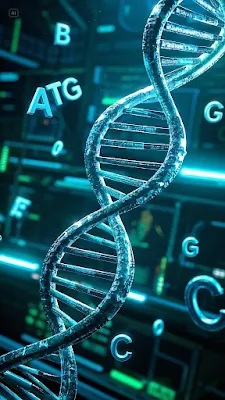👀 Intro
You know those manuals that come with appliances?
Washing machines, air fryers, even toasters.
But what if… humans had one too?
Sounds ridiculous?
Well—scientists actually tried to decode it.
And guess what?
They pretty much did.
And it happened on April 14, 2003.
Yep, exactly on this day.
🔬 What was the Human Genome Project?
The Human Genome Project was one of the most ambitious science projects in history.
It marked the moment when humanity first tried to read itself.
Launched in the late 1980s in the US,
the project brought together over 2,000 scientists
across more than 20 countries.
After 13 years of work,
they finally announced it:
“The human genome has been decoded.”
So what’s a genome?
It’s the full set of instructions that make up a human—
the blueprint written in our DNA.
🧬 The “instruction manual” inside every person
Your DNA is written in just four letters: A, T, G, and C.
Sounds simple—until you realize there are 3 billion of them inside every one of us.
Imagine a book with 3 billion characters.
That’s your personal manual.
Scientists looked at this and said:
-
This section decides your hair color
-
That one determines height
-
Oh, and this one? It could increase cancer risk
Basically, they cracked the code of being human.
🧠 From fixing humans to understanding them
Before this, medicine was about treating symptoms.
You got sick—you fixed it.
But after decoding the genome,
we started asking:
"Why does this happen in the first place?"
This was the real shift.
From fixing…
to understanding.
Today, we can predict genetic risks,
study how traits are inherited,
and even personalize treatments.
It all started with those 3 billion letters.
🤔 Was it really 100% decoded in 2003?
Here’s a twist:
The announcement in 2003 wasn't for 100% completion.
Back then, only about 92% of the human genome was decoded.
The rest—especially the complex, repetitive sequences—
were too difficult for the technology at the time.
That final 8%?
It wasn’t fully completed until 2022.
So what we really celebrated in 2003 was a turning point—
the symbolic moment when humanity
officially started reading itself.
🎯 DISNAM-style: Where facts meet fun
At DISNAM, we don’t just tell history—we imagine it.
What if people really had manuals?
What if couples tried assembling humans like furniture?
Through these quirky “what if” questions,
we deliver the actual history…
in a way that makes you want to keep watching.
🧩 Final thoughts
April 14, 2003.
The day we said:
“We're no longer guessing—we're decoding.”
Since that day,
science hasn’t just been about curing people.
It’s about understanding who we are.
This…
was the day we opened the Human Manual.
📎 Watch the video:
👉 https://www.youtube.com/@DisnamEdu
📒 Blog (Korean):
👉 https://blog.naver.com/disnamedu


Comments
Post a Comment